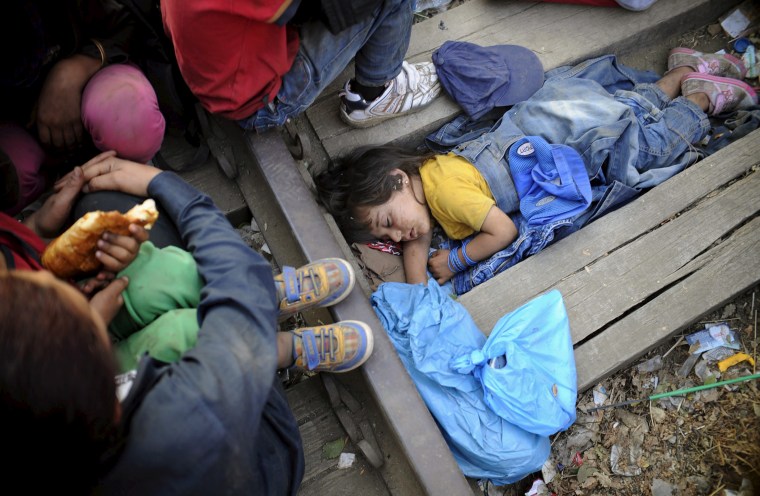From the moment it was rolled out, the Trump administration’s executive order on immigration has been a wrecking ball of controversy and confusion.
First, White House Press Secretary Sean Spicer said only 109 people were “inconvenienced.” Then conflicting statements as to whether the order applied to green card holders, Iraqi translators and dual nationals were given. After a week of lawsuits, protests and revisions, a Washington state judge on Friday ruled that refugees worldwide and visa holders from the seven banned countries — Iraq, Iran, Libya, Somalia, Sudan, Syria and Yemen — are allowed entry.
Who might take advantage of this change? Based on previous years’ immigration patterns and some of the numbers released by the Trump administration, here's a breakdown of the immigrants and refugees caught in the cross-hairs of the ban, and its subsequent reversal.
As a quick refresher, the below graphic explains who the Trump administration’s ban affected when it was in play.
How Many People Can Now Travel?
Far and away the groups who will be most immediately affected by Friday's ruling are refugees worldwide and citizens of the seven specifically named countries. With a small number of exceptions, the ban had prevented any member of these groups from entering the United States. The Department of Homeland Security now says it will not enforce the executive order.
Up to this point, the most indicative number provided by the Trump administration on who had been affected was 60,000 — the number of visas the State Department said were “provisionally revoked” as a result of the executive order. These visas are now reinstated. This number was criticized for not saying specifically what kinds of visas it included. It seemed to mostly retroactively affect previously issued visas, and specifics were not provided in response to questions. Friday's ruling means this question no longer matters.
Even without much in the way of clear data from the government about those affected, it is still possible to look at previous immigration trends to get a sense of travel into the country after the ban.
Refugees
Since the ban's issuance, the only way refugees globally could enter was through a waiver. More than 870 waivers for “in-transit” refugees — refugees already cleared for resettlement before the ban took effect — were provided. Refugees are now permitted to enter the Refugee Admissions Program as before. Syrian refugees, who were banned indefinitely, may also enter.
How many people might take advantage of that change? In each of the past three years, in the 120 days after Jan. 27 (when Trump issued the order), between 20,000 and 25,000 refugees entered the United States through the Refugee Admissions Program. The below map shows where in the world refugees arrived from in 2016, and the below chart shows the number of arrivals in that 120 day window going back to 2013.
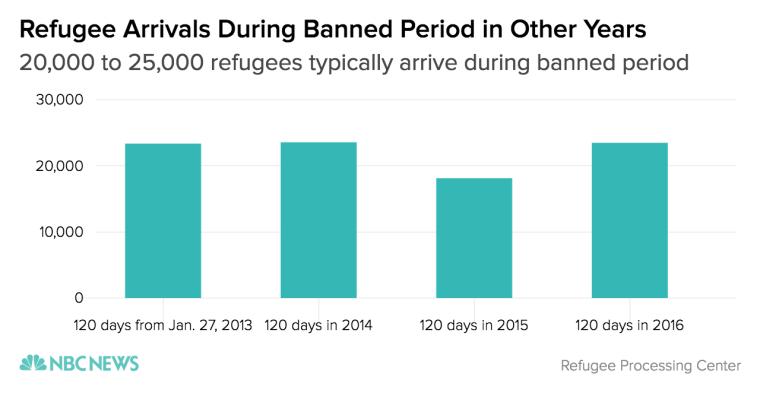
If the federal judge's order from Friday stands and migration patterns pick back up, thousands of refugees are likely to enter the country.
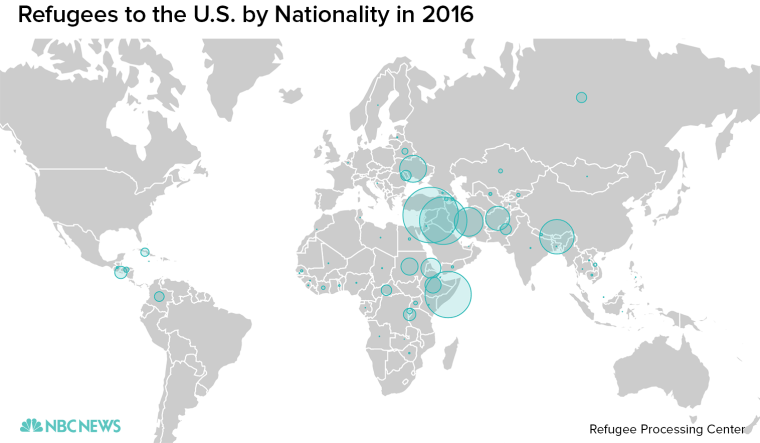
Citizens from Iraq, Iran, Libya, Somalia, Sudan, Syria, and Yemen
The other significant group who can now resume travel is citizens from the seven countries named in the order — Iraq, Iran, Libya, Somalia, Sudan, Syria, Yemen.
The ban covered nearly all travelers, including most non-immigrant and immigrant visas. The overwhelming majority (typically 85 to 95 percent) of these non-immigrant visa-carrying travelers are business travelers, tourists, temporary workers and students who reside temporarily in the United States and are not eligible for waivers or exceptions. They will now be allowed to travel.
A smaller group of travelers are issued immigrant visas, which allow those citizens to enter the United States and apply for a green card for permanent residency. They also can travel again.
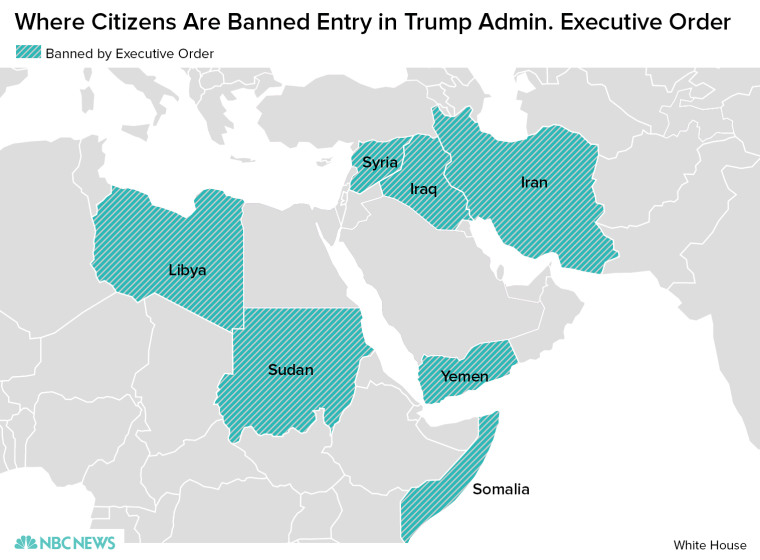
The number of people who might now try to enter if visitor and immigration trends resume can be estimated by past years’ data.
Data from the State Department and Department of Homeland Security showed that approximately 70,000 to 90,000 visitors from the seven banned countries arrived on non-immigrant visas (meaning, they did not intend to eventually reside permanently with a green card) per year in the most recent years. Seasonal travel effects should be taken into account when interpreting these numbers as more visitors arrive during holidays and the summer but those effects are not overwhelming.
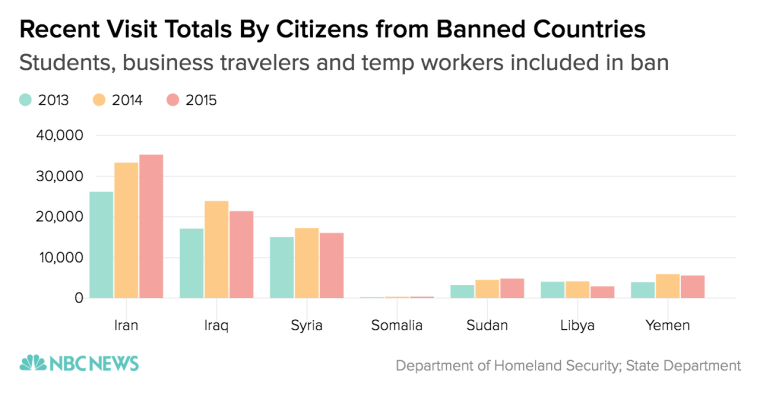
The number of immigrants seeking permanent residency with green cards is lower but still significant. Data aggregated by the Migration Policy Institute found between approximately 35,000 and 55,000 green cards were issued to citizens of the seven banned countries going back to 2010.
While green cards and immigrant visas (the part addressed by the ban) are not exactly the same, they are correlated. In recent years, approximately half of issued green cards were given to new arrivals on immigrant visas. The number of issued per year has been fairly consistent, as seen in the chart below.
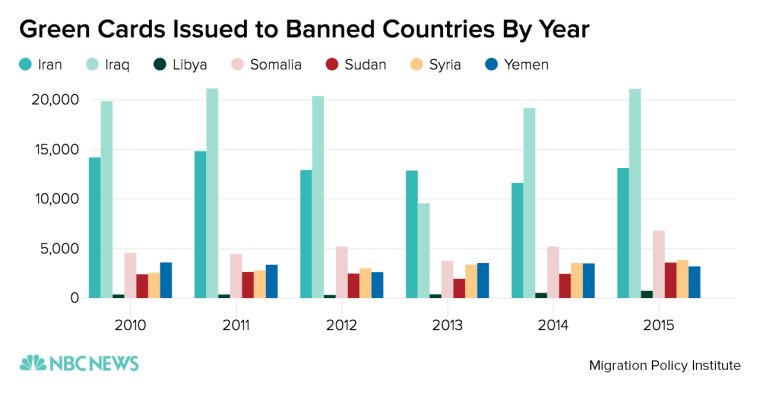
Unaffected
Among other categories where there was confusion — green cards, Iraqi translators and dual nationals, specifically — this order has no effects as those groups already gained the ability to enter the United States as the law was interpreted in real-time.
